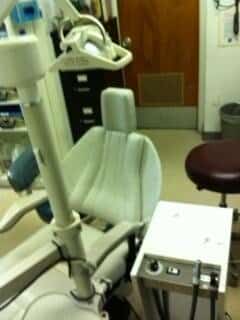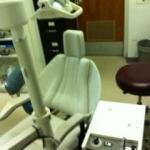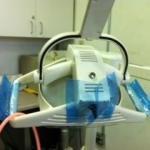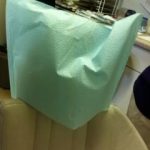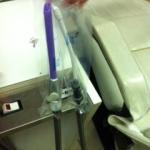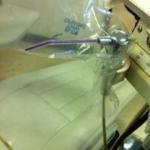In this article, the Healthsoothe team provides 5 chairside assistant training manual for 2023.
Clinic Rules and Attendance of a chairside assistance
Clinic Rules
- Do not use cell phones in the clinic.
- Conversations should be patient-appropriate and clinic-related. Do not stand around idly if not assisting—ask managers if you can help with anything!
- Mandatory attire: scrubs, nametags, disposable gowns (one-time use only!), closed-toed shoes with socks (no UGGs, flats, Crocs, etc). Do not wear excessive and/or dangling jewellery. Hair over 2 inches below the earlobe must be tied up.
- Maintain infection control via OSHA protocol: Do NOT touch anything considered clean (i.e. cabinets, counters, etc.) with gloves on, even if your gloves are clean! Gloves are always considered dirty.
- Do NOT touch needles!
- Make sure to eat before clinic and stay hydrated!
Clinic Attendance
- The volunteer scheduler sends out biweekly sign-ups for the clinic. It is your responsibility to check the spreadsheet for your assigned clinic session.
- Do NOT be late for the clinic! Allot time for possible traffic. If you will be late, notify the manager ASAP. Three tardies will result in a 3-month suspension.
- If you cannot make it to the clinic, it is your responsibility to find a replacement or it will count as a no-show.
- A no-show will result in a one-month suspension for new volunteers and a three-month suspension for regular volunteers.
Roles of the Chairside Assistant
Pulling patient charts and taking blood pressure
- All forms in the chart must be signed and have the patient's name on each page • Take patient blood pressure. Record it on the next available line in the treatment form, followed by your initials. Do not skip lines!
- Look over your medical history and present to the dentist any medications, medical conditions (i.e. hypertension, diabetes, etc.), or allergies that may be pertinent to the procedure.
Setting up the dental chair and unit
- Birex chair (including light) and unit (including tray counter, highspeed evacuator, saliva ejector, air-water syringe, and all tubings).
Birex is carcinogenic—Use only with gloves on! - Take gloves off. Place barrier tape on light handles, light switch, and chair remote control. Place headrest cover over the headrest. Make sure the light and chair are functioning.
- Make sure the water reservoir is adequately filled with distilled water. Do not screw the reservoir back on too tightly.
- Place disposable tips on the air-water syringe, high-velocity evacuator (HVE, or high-speed suction), and saliva ejector (slow-speed suction).
Test the air-water syringe and both suctions. - Place plastic sleeves over the tips. Penetrate the plastic sleeves with the respective air-water syringe tip and suction tips. Arch the saliva ejector tip.
- Let the clinic manager know that the chair is ready for the patient. Put on protective wear: disposable gown, clear goggles/glasses, mask, and gloves.
Preparing a patient for procedures
- After the clinic manager has seated the patient (with patient chart) and the floor manager has set down instrument tray, place the bib around the patient (Shiny side down! Fold the top 1-inch of the bib down before clipping for more support).
- Give the patient dark sunglasses to protect his/her eyes from the
dentist’s light. Have the patient rinse his/her mouth with mouthwash. - Make polite conversation with the patient until the dentist arrives. Keep conversations appropriate.
Assisting the dentist
- Charting: You will assist the dentist when performing an oral exam.
Familiarize yourself with oral anatomy! - During procedures, you will be mainly involved with:
Using the high-speed evacuator and saliva ejector ( general suctioning guidelines) - Using the air-water syringe (Think WA as in Washington: Water is the left button, used for rinsing a patient’s mouth. Air is the right button, used for drying a tooth or keeping the dentist’s
mirror from fogging up) - Passing instruments: Familiarize yourself with the tools for various procedures with the Instrument Packet available 1http://fdc-pds.ucsd.edu/Volunteer/volunteer.html . When passing instruments, use four-handed dentistry
- Other chairside duties for specific procedures are further detailed on
Breaking down the chair and unit
- Always break down and set up the chair as quickly as possible for maximum efficiency of the clinic!
- With gloves on, remove handpieces and cavitron tips and place them on instrument tray. DO NOT TOUCH NEEDLES! Only managers and dentists can handle needles.
- Remove and dispose of suction tips, air-water syringe tips, and respective barriers. Make sure to remove only the disposable tip of the saliva ejector. Do not remove the rubber tip, it is NOT replaceable!
- Remove the headrest cover and light barriers.
- Take off dirty gloves and put on clean gloves. Birex the chair and the unit, as well as anything that has been touched (including the sunglasses and bib clips). Do not forget to birex the curing light and cavitron if used! Set up the chair as described in Part II. Run lines briefly after bloody extractions.
- If the chair will no longer be used for the current clinic session, you do not need to replace the light barriers, headrest cover, and suction and air-water syringe tips. Instead, run both suction lines with a line solution. Take caution when running the lines, do not overwhelm the vacuum!
Assisting with Composite Filling and Extraction
Healthsoothe outlines the basic steps for a composite filling and extraction and the general role of the chairside assistant at each step of the procedure.
Composite filling
- Application of topical anaesthetic and local anaesthetic
- Rinse with an air-water syringe after application of local anaesthetics
- Removal of decay and unsupported tooth structure with a high-speed handpiece
- Use a high-velocity evacuator to reduce aerosol and eliminate water and residue
- Application of etching
- Use a high-velocity evacuator to keep the area isolated
- Application of bonding agent
- Use HVE to keep the area dry and isolated. Cure with curing light.
- Insertion of composite
- Pass requested instruments using four-handed dentistry.
- Clean composite instruments with gauze immediately! Cure composite material.
- Polishing of composite with polishing burs
- Use a high-velocity evacuator to the suction residue and reduce aerosol
- Check occlusion with articulating paper
Extraction
- Application of topical anaesthetic and local anaesthetic
- Rinse and suction after application of local anaesthetics
- Separation of a tooth from periodontal ligament using periosteal
- Expansion of socket and further separation of a tooth from ligament/bone using small/large elevator
- Use of extraction forcep to remove tooth
- Never remove any tooth fragments from the dental tray until the procedure is finished! This is to ensure that the tooth was removed entirely and no broken fragments remain in the extraction site
- Removal of debris or infected tissue from the socket
- Compression of the socket
- Irrigation of socket and rounding off of any sharp bone edges with a bone file
- Insertion of gauze in the extraction site. Possible prescription of painkillers/antibiotics.
- Give the patient extra gauze packets.
- Give patient post-op instructions.
Additional resources and citations
- 1http://fdc-pds.ucsd.edu/Volunteer/volunteer.html
Get more content like this and the inside gist on all the fun things that happen at Healthsoothe straight to your inbox when you Subscribe to the Healthsoothe newsletter. Do it now!

